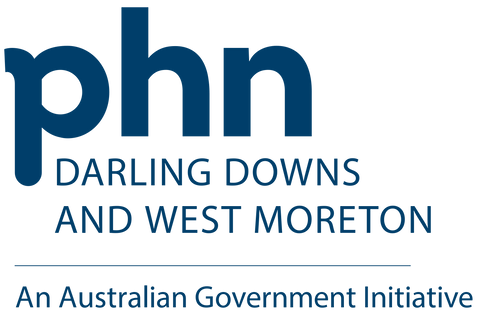Our system
Increasing access and coordination of care
Digital health
The PHN assists health care providers to adopt digital health tools to enable access to the right health information in the right place at the right time. We assist with My Health Record, electronic prescribing, secure messaging, telehealth, eOrders, eHealth incentives and Queensland Health initiatives.
During 2021-2022, we supported:
5,754,944
total uploads of documents to My Health Record
500+
health professionals assisted by the PHN to keep connected to safe and secure digital health systems
5,210,829
electronic messages and medical documents sent securely between health professionals
Telehealth
Telehealth is an integral tool to bring health care closer to home. This became particularly important in response to the COVID-19 pandemic.
The uptake of telehealth has enabled specialists, general practice, mental health and other allied health providers, aged care and community organisations to provide effective health care to their clients using video call consultations.
Our team has been providing resources, information and access to telehealth platforms.
What we focused on in 2021-2022:
Keeping connected
The PHN worked with all health care providers in the region to keep them connected safely and securely to national digital health systems, including My Health Record, secure messaging, electronic prescribing and telehealth.
From March 2022, Services Australia upgraded their software to web services compatible products and strengthened their authentication process by replacing Medicare PKI site certificates with Provider Digital Access (PRODA) for organisations. The PHN offered assistance to all professionals in transitioning to web service technologies and updating their National Authentication Services for Health (NASH) certificate to strengthen security when they access digital health services to avoid disruption to their practice.
Aged care residents become digitally savvy to beat COVID isolation
The lasting impacts of COVID-19 on the health and quality of life of all Australians are yet to unfold.
Ahead of the curve, an aged care facility in the small town of Kingaroy in Queensland is proactively working to minimise the effects of physical distancing and social restrictions on their residents by embracing technology.
Service Manager of Orana Lutheran Services Kym Zischke says technology has helped them to continue meeting the health needs of residents.
“We worked with our Darling Downs and West Moreton PHN through the pandemic and were able to connect up health services using a lot more telehealth,” Ms Zischke said.
HealthPathways
HealthPathways is a long-term program aimed at supporting GPs and health care professionals to guide their patients to better care. It is a web-based portal offering evidence-based information for assessment and management of a range of clinical conditions and includes clear referral guidance for local hospitals, specialists and allied health.
Our region operates two local online portals:
1,465
collective pathways
15,149
active users
89,875
unique page views
3,000
plus new users
COVID-19
Most viewed pathways
Supporting the primary care flood response
As severe weather and flooding hit the east coast of Australia in early 2022, Darling Downs and West Moreton primary health providers enacted a coordinated response to support their local communities. Widespread flood damage, unsafe conditions and road closures resulted in limited access to hospitals and increased demand on primary care.
Dr Cath Hester from Colleges Crossing Family Practice said that having access to laptops and digital health tools was essential for facilitating an effective response.
“The PHN set us up well to respond to this disaster with access to Pen CS, laptops to facilitate Telehealth appointments and their ongoing advocacy of the important role of GPs in disaster management planning,” said Dr Hester.
Throughout the floods, the PHN sent regular disaster alerts to general practices and allied health professionals. When the Ipswich Evacuation Centre was set up, the PHN helped establish GP support. In addition, the PHN provided linkages between Local Disaster Management Groups (LDMGs) and practices to identify issues in primary care and source tetanus injections.
“Enabling our local primary care system to remain connected and responsive is vitally important. The recent floods demonstrated the resilience and determination of our local healthcare workforce,” said CEO Lucille Chalmers.
“We heard from local professionals that PHN alert communications are helpful and appreciated. Our new SMS Emergency Alerts will allow health professionals to receive this critical information directly to their phone,” said Ms Chalmers.




